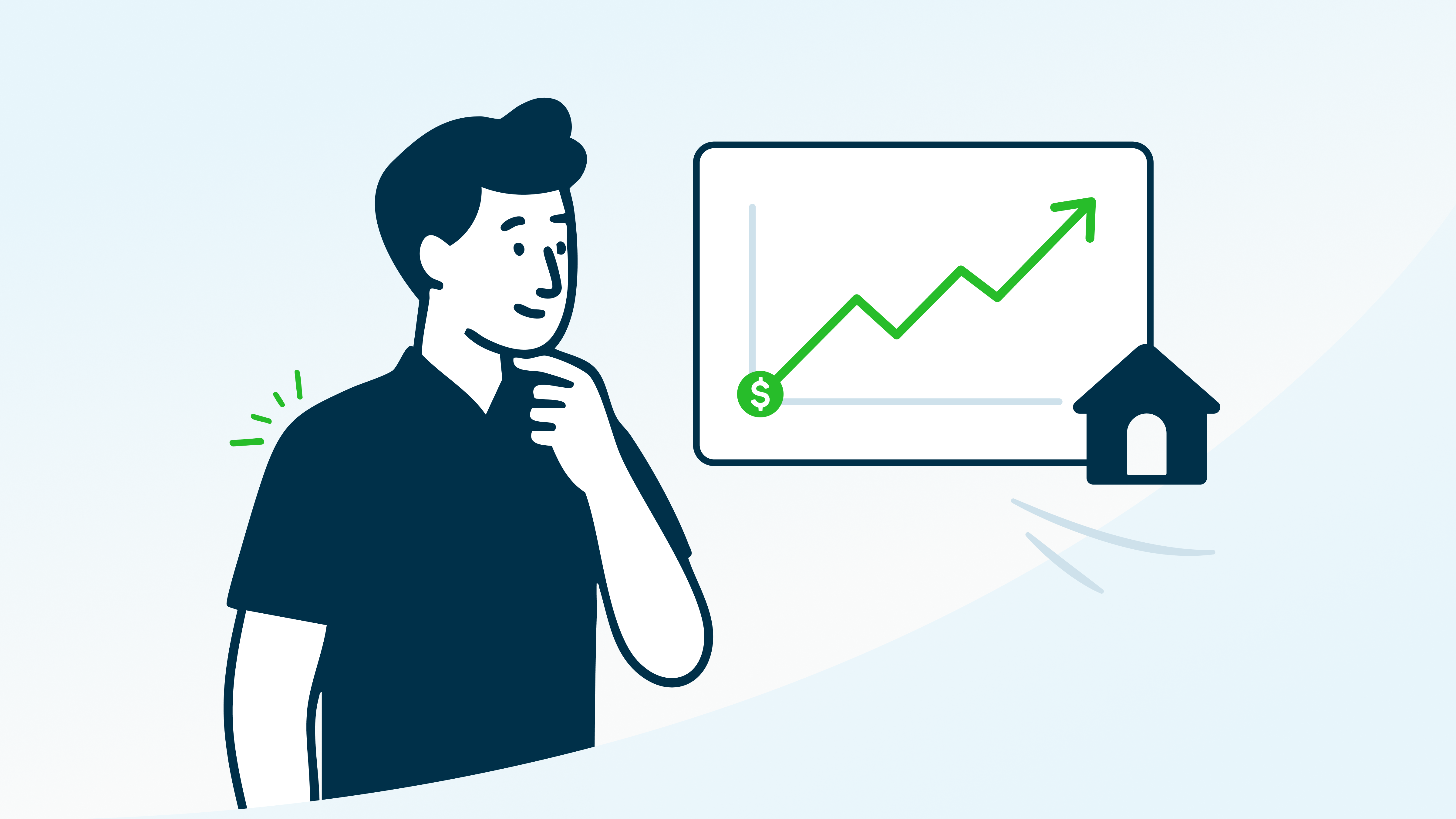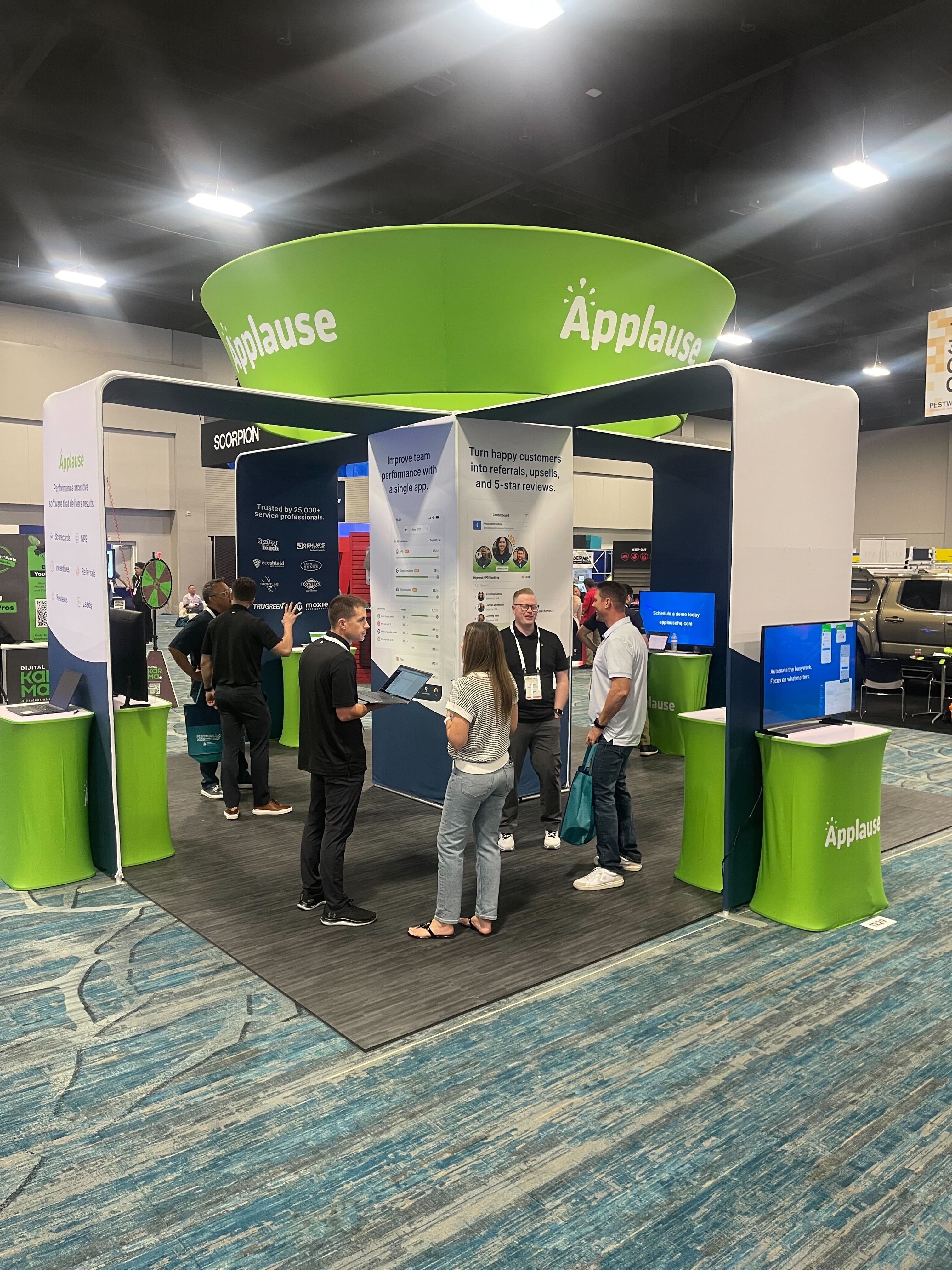Growth in home services used to follow a pretty simple formula: buy more leads, run more jobs, repeat. But that playbook doesn’t work as well as it once did.
Across industries, customer acquisition costs (CAC) have climbed 222% in the last eight years. And they aren’t slowing down. Google’s cost per conversion rose another 19% this year alone. Meanwhile, consumers have become more discerning and more willing to drop a brand after a single bad experience.
In other words, paying for growth is getting harder.
So it’s no surprise that the most forward-thinking owners in pest control, HVAC, lawn care, plumbing, electrical, and beyond are rewriting their growth strategy entirely. Instead of pouring dollars into bigger budgets, they’re investing in something far more efficient technician performance.
And it’s working. So well, in fact, that it’s becoming its own growth model.
We call it Service-Led Growth (SLG). If you want to learn about the genesis of SLG and how we know it’s effective, check out our deep dive on how SLG works.
The short version is this: in home services, company performance is downstream of technician performance. If you invest in optimizing service quality, the rest will follow.
A better customer experience begets better reviews, more referrals, more new business due to higher 5-star review volume, more repeat business, and so on. All the true markers of a healthy company with significant growth potential.
But before you can operationalize SLG, you need to take a hard look at how you’re measuring and managing your techs.
We recently surveyed nearly 1,000 technicians across HVAC, plumbing, pest control, and lawn to understand how technicians are managed and measured today. And we learned there are a number of ways owners can change the way they track and influence performance to get more out of their teams.
Let’s dive into the results.
What nearly 1,000 techs told us about how they’re managed & measured
Overall, our survey results revealed that, while a significant portion of home services technicians are getting pretty regular coaching, know where they thrive and struggle in the field, and have a clear understanding of how they compare to peers, many others are in the dark.
That means there are a few simple ways owners can tweak how they measure and coach their techs that will drive an outsized improvement in performance.
Here’s what we found.
Most technicians know they meaningfully contribute to business success
If SLG asks technicians to think like owners, the good news is: most of them already do.
In our survey, 68.8% of technicians told us they believe their day-to-day performance directly drives company growth.
They understand that a single great service call can turn into a five-star review, which turns into more booked jobs, which turns into more revenue for the team, etc. They see that connection intuitively, even if the data that proves it hasn’t yet been surfaced for them.
This sense of purpose increases intrinsic motivation. And intrinsic motivation (pride in your work, ownership of your craft, and the belief that your effort delivers unique value) is strongly correlated with higher productivity.
That said, intrinsic motivation is only one piece of the puzzle. For SLG to work, owners need to fan the flames even further with extrinsic motivation in the form of consistent feedback, recognition, and individual incentives.
Together, intrinsic and extrinsic motivation elevate techs from task-doers to growth drivers. They start taking ownership of the customer experience, caring about outcomes, and repeating the behaviors that fuel compounding growth.
Feedback happens, but it’s often inconsistent
More than half of technicians (55.4%) receive weekly feedback. But 30% only hear from managers monthly or less, with 15% only getting feedback when something goes wrong.
That inconsistency creates a natural drag on performance. You can’t improve what you don’t understand, and you can’t feel confident about your work if the only feedback you get is sporadic and negative.
Prior research in this area is unequivocal: frequent feedback is one of the strongest predictors of employee performance, self-esteem, and retention.
Teams that receive routine coaching vs. periodic criticism experience 8.9% higher profitability and 21% higher engagement. And, tellingly, employees are 3x more likely to be engaged when their manager provides daily or weekly feedback rather than monthly or less.
For owners and managers, this means it’s time to look at how frequently you’re giving your guys a pat on the back or a helpful pointer.
If you fall into the camp of owners who only doles out feedback once a month or less, you have a clear, easy, and free opportunity to boost technician performance through more frequent check-ins and recognition.
Most techs think they’re above average (despite sometimes lacking proof)
One of the most revealing findings from our survey was this: nearly 9 in 10 technicians rated themselves above average. A whopping 48% said they’re “definitely among the top performers” on their teams.
This finding is further complicated by the fact that 1 in 5 technicians told us they don’t get enough feedback to accurately gauge where they stand compared to their peers.
Psychologists call this the “illusory superiority effect”. It’s when people rate their own abilities more favorably in the absence of objective benchmarks. It’s a natural human bias. But it also leads to complacency: if people assume they’re at the top of their game, they obviously have no incentive or reason to improve.
The solution here is to give your technicians a way to see how they compare to their peers so they can more accurately assess whether they’re leading the pack or falling behind.
Giving techs access to team-wide leaderboards or encouraging participation in contests can help to demystify how they’re performing relative to coworkers.
And because human beings are naturally competitive, allowing techs to see how they rank further motivates them to increase service quality — even in the absence of other incentives.
So if you don’t give techs a way to see how others on their team are doing today, you’re in luck. You have another opportunity to improve technician performance and, by extension, company performance.
Customer satisfaction is the #1 metric techs are tracked on
When we asked technicians which metrics they’re goaled against, we gave them a “check all that apply” list.
Most popular metrics:
- Customer satisfaction/NPS: (64%)
- On-time arrival (49%)
- Time on-site (45%)
Lower focus areas:
- Upsells (33%)
- Reservice frequency (33%)
The fact that customer satisfaction and on-time arrival top the list are proof positive that delivering high-quality service and respecting the customers’ time are top of mind for owners.
While time-on-site, upsells and reservice frequency are more obviously tied to revenue and cost, most owners understand that high customer satisfaction ratings are the lifeblood of a successful home services business.
How to implement SLG to unlock profit without increasing marketing spend
The beauty of SLG is that it's a model for driving growth using the team you already have.
Today, about half of owners are already benefitting from SLG by accurately tracking, sharing, and coaching techs on their performance on a consistent basis. Others, however, need to make small changes to how they measure and manage technicians before they can reap the benefits.
Below is a checklist for implementing SLG, no matter how you track and coach your team today.
1. Set simple, clear goals.
Technicians can’t hit targets they can’t see. Set clear goals for your team so they know exactly what they’re aiming for.
Start with 3 to 5 core metrics tied directly to customer experience and operational efficiency:
- Customer NPS
- Review count & rating
- Reservice frequency
- Time on-site
- Driving score
Make it easy for techs to see their progress toward these goals in real-time with an automated performance tracking app they can view wherever they have internet access.
2. Incentivize the right behaviors in real time.
Small financial incentives increase motivation and productivity. But to work, they need to be instant and tied to individual performance.
A few examples of how to integrate incentives into your workflow:
- Bonuses for five-star reviews
- Weekly recognition for zero reservices
- Leaderboard highlights
- Contests that reward the winner with a small cash prize
Automating incentives is key. The sooner recipients can cash out, the more likely they are to repeat the positive behavior in the future.
3. Create transparency and healthy competition
When technicians have access to their own performance data, improvement becomes far more intentional. All the better if they can see how they compare to peers via leaderboards.
Transparent scorecards give teams a clear understanding of expectations, show how they compare to peers, and make it easier to identify where to focus their efforts.
This visibility drives:
- Accountability
- Peer-driven motivation
- Clarity around goals and standards
- Faster self-correction without constant coaching
The outcome is a more informed, more engaged team that improves continuously.
4. Automate everything you can
If performance tracking requires a spreadsheet, it will not scale.
Automated systems:
- Capture data from every job
- Trigger rewards in real time
- Update scorecards automatically
- Remove manual error and bias
Automation keeps the feedback loop alive 24/7 without adding work for you or your admin team.
5. Coach continuously, not reactively
About half of surveyed technicians get feedback at the frequency that they should. The other half has room to improve.
Any feedback – even just an acknowledgement of a job well done, increases technician:
- Confidence
- Productivity
- Consistency
- Motivation
Technicians who receive frequent feedback of some kind rate and are also less likely to churn.
The SLG flywheel
Once SLG is in place, performance improvement becomes a continuous loop: track the right metrics, coach to them, reward progress, and repeat.
Each cycle strengthens the next. Over time, technicians deliver more consistent service, customers respond with higher satisfaction and more reviews, and growth compounds naturally.
For a deeper look at our research and the SLG framework, download the full report.
And to turn technician performance into automatic business growth, chat with our team.

.svg)





.jpg)
.png)



.webp)